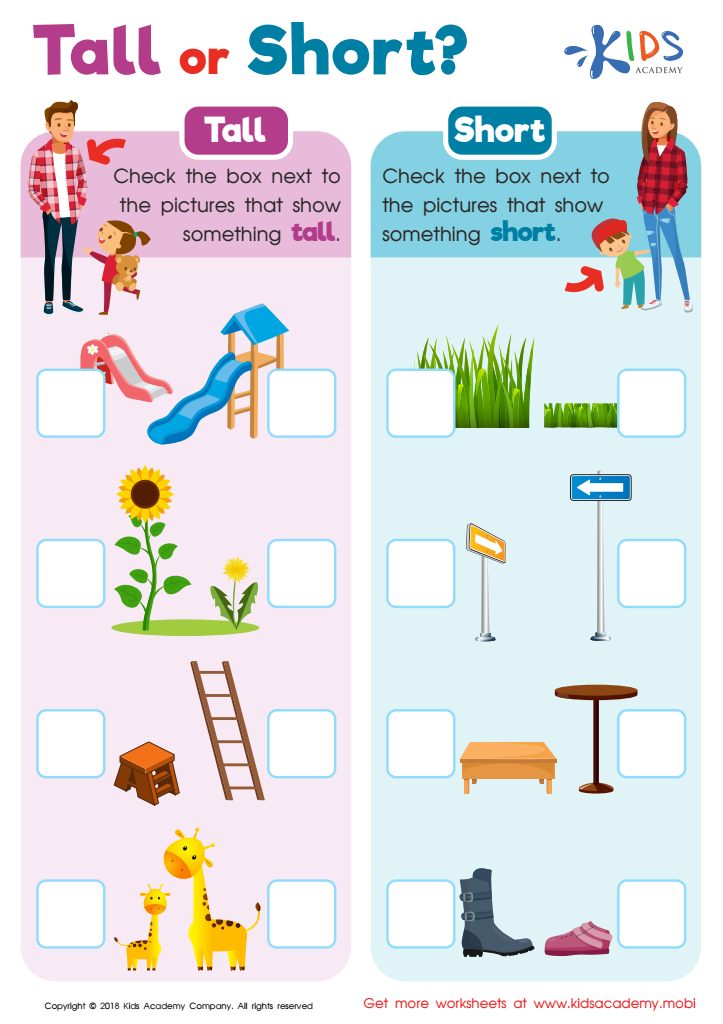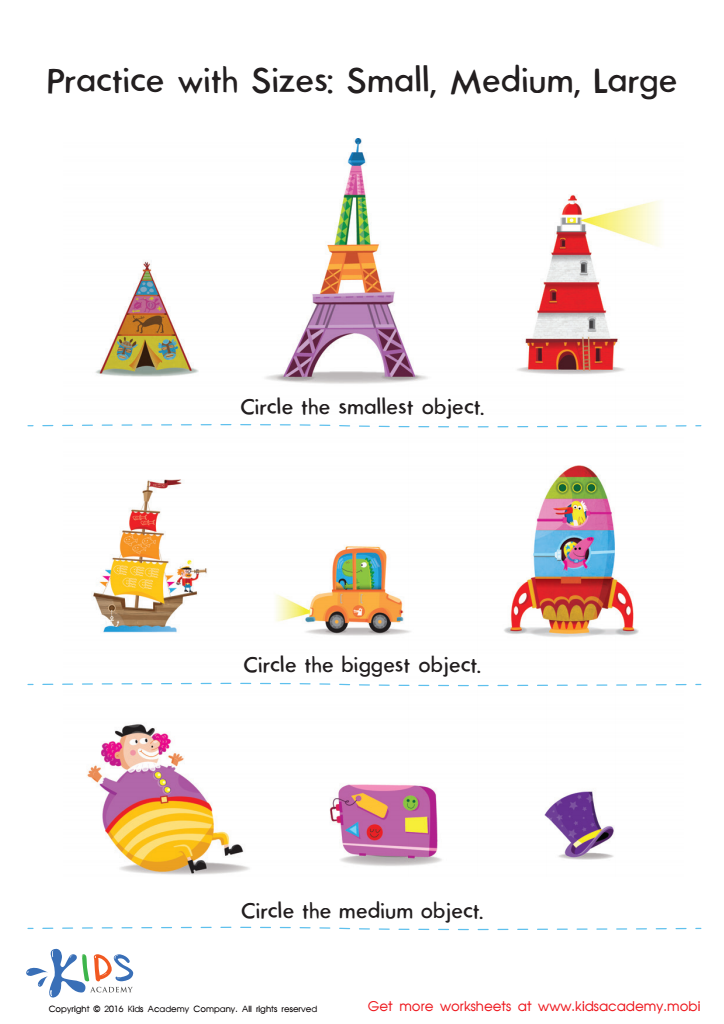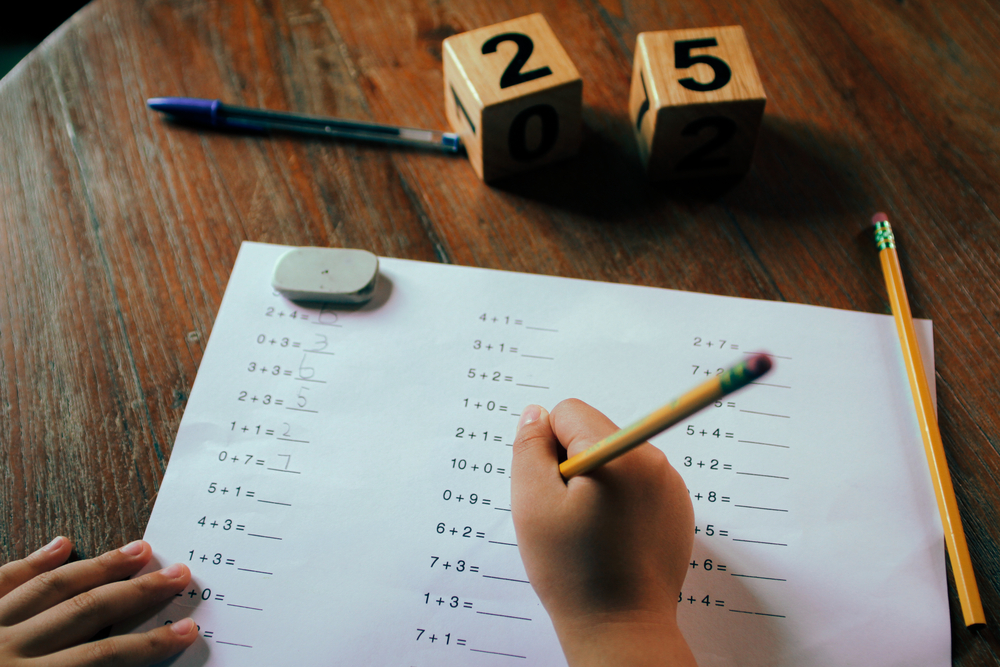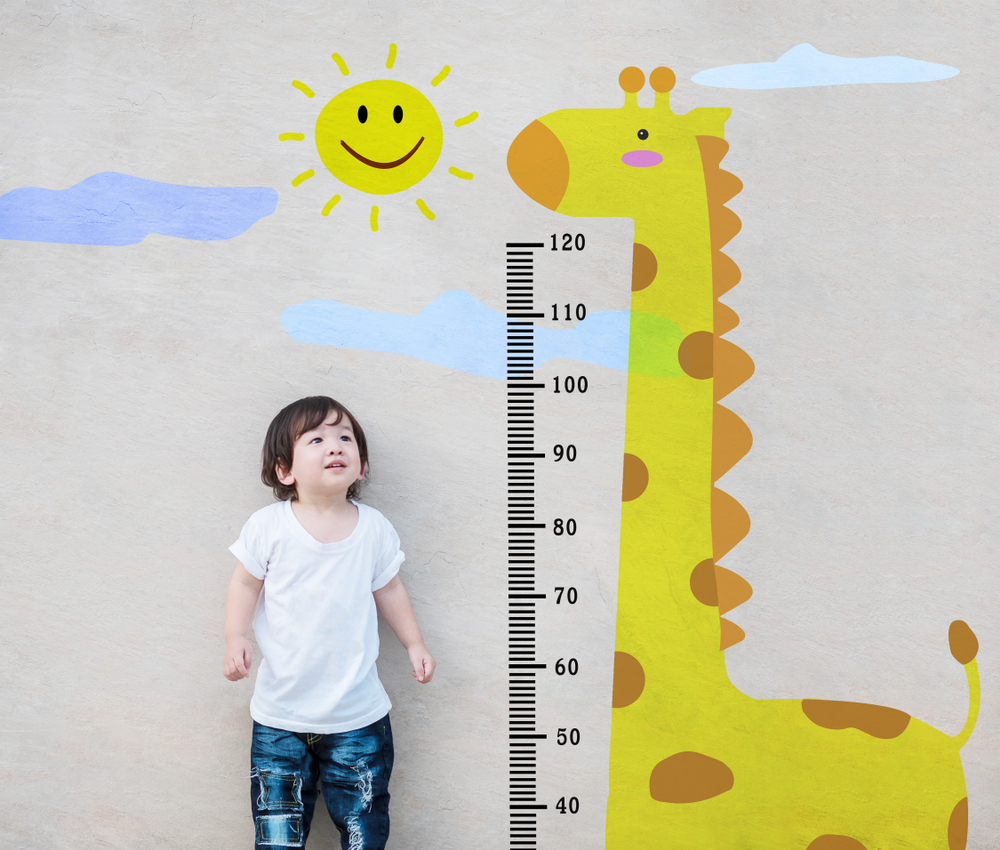Understanding sizes Worksheets for 5-Year-Olds
4 filtered results
-
From - To
Our "Understanding Sizes Worksheets for 5-Year-Olds" are designed to help young learners grasp crucial early math concepts. These engaging, age-appropriate worksheets focus on recognizing and comparing different sizes through fun activities. From identifying larger and smaller objects to arranging items by size, children will enhance their spatial awareness and problem-solving skills. Perfect for both classroom use and at-home learning, these printable worksheets feature vibrant illustrations and easy-to-follow instructions. Boost your child's confidence and readiness for school with these thoughtfully crafted educational resources from Kids Academy! Start your child's learning journey today!


Shapes of All Sizes Worksheet


Tall or Short? Worksheet


Classifying by Size Sorting Worksheet
Understanding sizes is a vital concept for 5-year-olds that parents and teachers should prioritize for several reasons. First, grasping size differences helps children categorize and make sense of the world around them. This foundational skill is crucial for cognitive development and problem-solving, as it allows kids to compare objects and understand relationships such as bigger, smaller, taller, and shorter.
Additionally, learning about sizes aids in everyday tasks and social interactions. For example, when dressing themselves, children need to distinguish between clothing sizes to select appropriate attire. It also fosters independence and confidence as they navigate daily routines.
Moreover, understanding sizes is intertwined with mathematical concepts. Early mastery of sizing lays the groundwork for geometry and measurements they will encounter in future academic learning. When children compare sizes, they are practicing important reasoning skills and quantitative thinking.
Finally, interactive lessons about sizes can be fun and engaging. They provide opportunities for hands-on learning through play, like sorting blocks, comparing heights, and exploring different objects. Encouraging such interactive activities boosts their curiosity and enthusiasm for learning.
By ensuring that 5-year-olds understand sizes, parents and teachers prepare them not only for academic success but also equip them with essential life skills.
 Assign to My Students
Assign to My Students

















